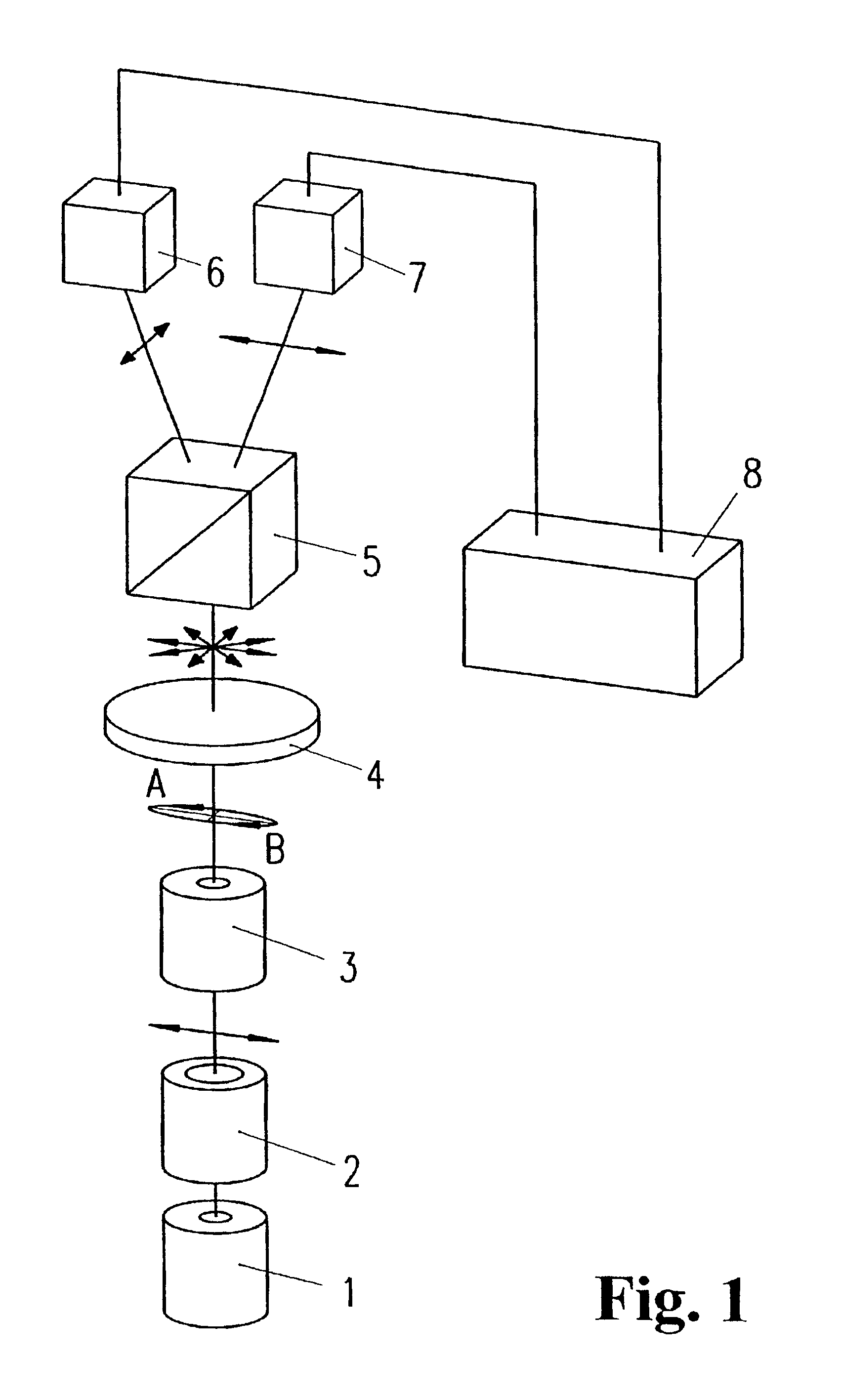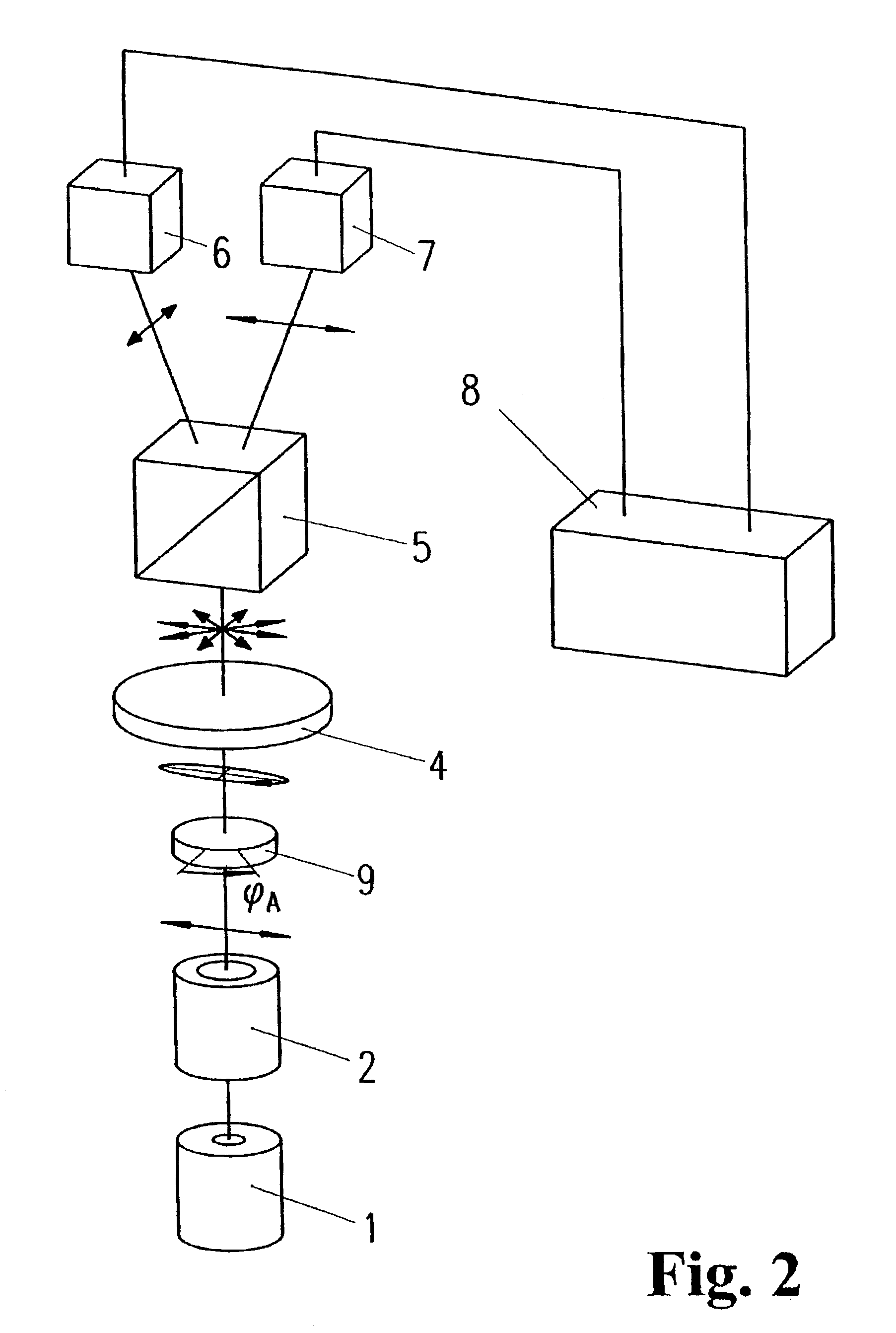Method and arrangement for optical stress analysis of solids
a technology of optical stress analysis and solids, applied in the direction of force measurement by measuring optical property variation, material analysis, instruments, etc., can solve the problems of high phase shift direction, inability to provide directional information about the position of the principal axes of elliptically polarized, and inability to overcome the effect of methods
- Summary
- Abstract
- Description
- Claims
- Application Information
AI Technical Summary
Benefits of technology
Problems solved by technology
Method used
Image
Examples
Embodiment Construction
[0050]The method according to the invention and the arrangements based on the method rely on basic constructions of two-channel polarimeters, known per se, using linearly polarized light for analyzing phase shifts (birefringence effects). Known arrangements of this kind comprising, successively, a light source, a linear polarizer, the measurement sample, a polarizing splitter, one of whose two orthogonal polarization directions is oriented at 90° to the linear input polarization, and two light receivers measuring incident light intensities in two orthogonal polarization channels, are expanded, according to the invention, by an optical unit which produces an elliptical polarization of light. The elliptical polarization has the particular feature that the polarization ellipse has a very large ratio of the large principal axis to the small principal axis and, in two measurement phases A and B, a first state of the direction of rotation of the elliptical polarization can be switched to ...
PUM
 Login to View More
Login to View More Abstract
Description
Claims
Application Information
 Login to View More
Login to View More - R&D
- Intellectual Property
- Life Sciences
- Materials
- Tech Scout
- Unparalleled Data Quality
- Higher Quality Content
- 60% Fewer Hallucinations
Browse by: Latest US Patents, China's latest patents, Technical Efficacy Thesaurus, Application Domain, Technology Topic, Popular Technical Reports.
© 2025 PatSnap. All rights reserved.Legal|Privacy policy|Modern Slavery Act Transparency Statement|Sitemap|About US| Contact US: help@patsnap.com



